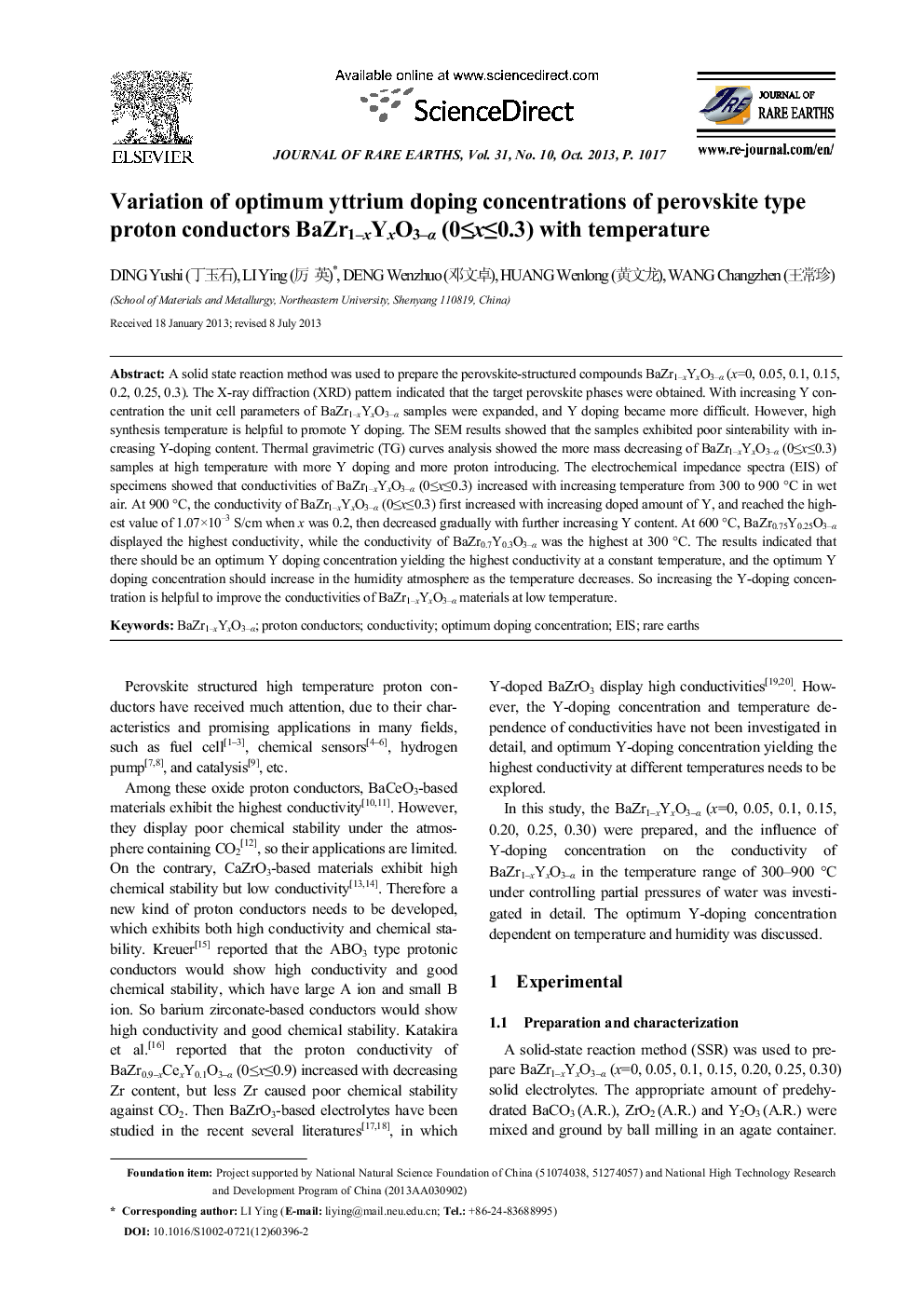| Article ID | Journal | Published Year | Pages | File Type |
|---|---|---|---|---|
| 1261082 | Journal of Rare Earths | 2013 | 6 Pages |
A solid state reaction method was used to prepare the perovskite-structured compounds BaZr1−xYxO3−α (x=0, 0.05, 0.1, 0.15, 0.2, 0.25, 0.3). The X-ray diffraction (XRD) pattern indicated that the target perovskite phases were obtained. With increasing Y concentration the unit cell parameters of BaZr1−xYxO3−α samples were expanded, and Y doping became more difficult. However, high synthesis temperature is helpful to promote Y doping. The SEM results showed that the samples exhibited poor sinterability with increasing Y-doping content. Thermal gravimetric (TG) curves analysis showed the more mass decreasing of BaZr1−xYxO3−α (0≤x≤0.3) samples at high temperature with more Y doping and more proton introducing. The electrochemical impedance spectra (EIS) of specimens showed that conductivities of BaZr1−xYxO3−α (0≤x≤0.3) increased with increasing temperature from 300 to 900 °C in wet air. At 900 °C, the conductivity of BaZr1−xYxO3−α (0≤x≤0.3) first increased with increasing doped amount of Y, and reached the highest value of 1.07×10−3 S/cm when x was 0.2, then decreased gradually with further increasing Y content. At 600 °C, BaZr0.75Y0.25O3−α displayed the highest conductivity, while the conductivity of BaZr0.7Y0.3O3−α was the highest at 300 °C. The results indicated that there should be an optimum Y doping concentration yielding the highest conductivity at a constant temperature, and the optimum Y doping concentration should increase in the humidity atmosphere as the temperature decreases. So increasing the Y-doping concentration is helpful to improve the conductivities of BaZr1−xYxO3−α materials at low temperature.
Graphical abstractY-doping concentration dependence of the conductivity isotherm at 300, 600 and 900 °CFigure optionsDownload full-size imageDownload as PowerPoint slide
